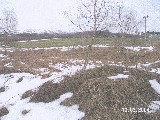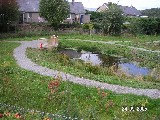Further pictures of the Tarland Catchment and progress with planned works will be added to the site as they become available.
If you have taken a picture in the area which you would like to add to the website, please e-mail it to info@3deevision.org with your own contact details, stating where and when it was taken.
To view a enlarged image of any of the pictures below, click on the thumbnail picture.
Buffer Strips
The 3Dee Vision project has been working with the MacRobert Trust to fence off burns and plant trees and shrubs along burn margins on the MacRobert Estate. This helps to improves water quality in a number of ways: by keeping cattle out of the burns, by protecting against erosion of the banks and by buffering nutrient and sediment run-off from agricultural land. The buffered sections of burn also benefit from enhanced riparian biodiversity. The whole of Small Burn has now been fenced off and further small buffering wetlands are planned elsewhere in the catchment.
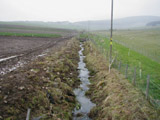
Small Burn, March 2004
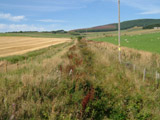
Small Burn, September 2005
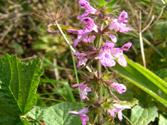
Marsh woundwort growing in buffer strip
Mill of Gellan wetland
Aberdeenshire Council's flood prevention team are addressing the issues of flooding in Tarland and Aboyne by developing a sustainable flood storage strategy for the Tarland Catchment. A first flood storage wetland has been developed at the Mill of Gellan as a demonstration of the possibilities of natural flood storage. The area was an existing marshy site next to the Tarland Burn but with some carefully designed reprofiling, the Tarland Burn will now be able to spill into the wetland area when in spate and will naturally drain down again as flood waters recede.
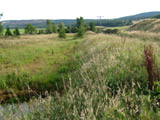
Mill of Gellan flood storage wetland
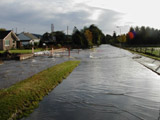
Flooding in Tarland village
Tarland WwTP Wet Grassland
Tarland now has a new Wastewater Treatment Plant and the neighbouring grass plots are no longer needed as part of the treatment process. The 3Dee Vision project is carrying out works to enhance this area of wet grassland which will continue to receive treated effluent in order to maintain the existing bird habitat.

Tarland WwTP irrigation plots during 2004
Viewfield Wetland
The 3Dee Vision project, together with additional funding from SNH, have supported the Tarland Development Group in creating a community wetland at Viewfield.
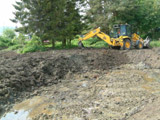
Construction of Viewfield community wetland, Spring 2004
Community Evenings in Tarland
Each year, the 3Dee Vision project has held a community evening in Tarland to provide information on the project's work in the area. The 2005 open evening was held at Tarland School and was coupled with a launch of the Schools River Dee Mural. Over 130 people attended the evening.
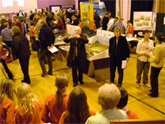
3Dee Vision Community Evening at Tarland School
Tarland School River Dee Mural
The Primary 6 and 7 classes at Tarland School painted a mural of the River Dee from source to sea, to brighten up the bike sheds in the school playground. The mural was planned by the whole school using their Dee Riverbank Resources and with help from local professional artist, Sera Irvine.
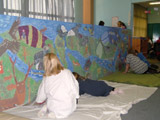
Children of Tarland School painting the River Dee Mural
 The James Hutton Institute
The James Hutton Institute







